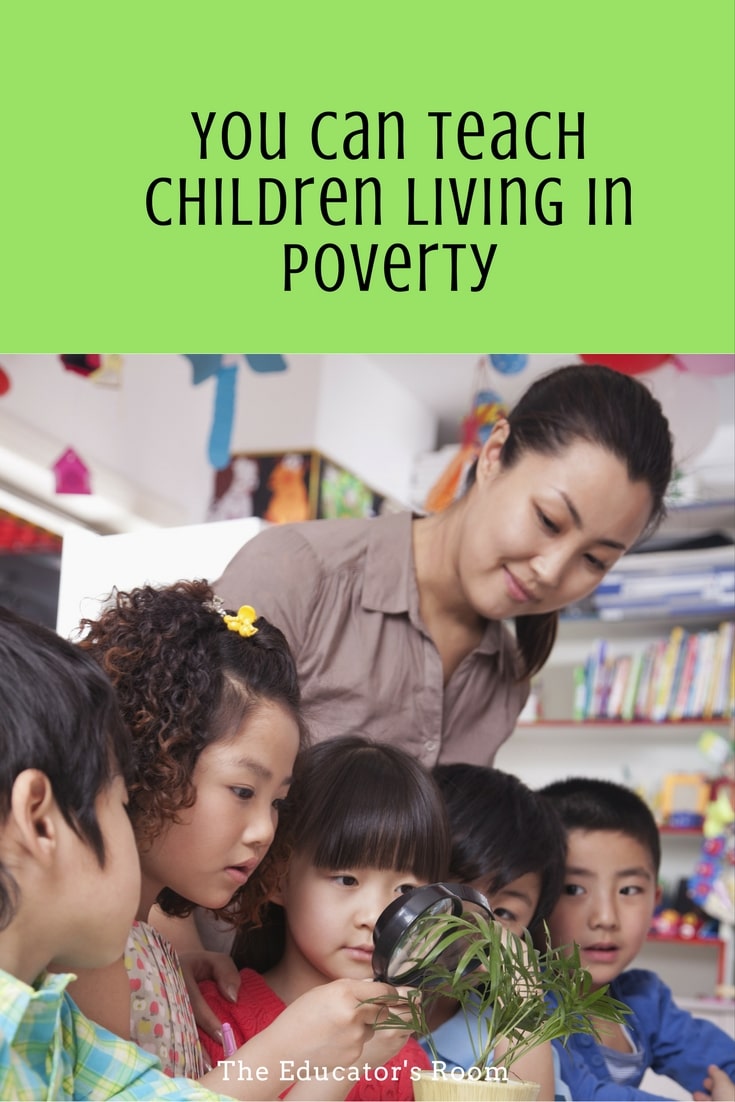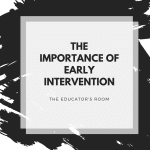Right after you begin your daily class starter, Johnny comes into class late and doesn’t have his supplies. He looks despondent. Next thing you know, he’s thrown his books on the floor and put his hoodie on over his head. What do you do? Consider this: Does Johnny come from a house where he has his basic needs met? How many of your students have their basic needs met at home? How do you respond? How do you teach and reach children who are living in poverty?
What is poverty?
The United States Government has identified a poverty level with a set of guidelines. But is it that simple? Do we define poverty by a looking at a chart? Well, as teachers, we have no access to how much money a family has, and we cannot just look at the free and reduced lunch students. In fact, Eric Jensen actually suggests there are several different types of poverty in his book Teaching With Poverty in Mind.
1 – Situational Poverty occurs when a student incurs a sudden loss or crisis. Sometimes parents lose jobs, house fires happen, and natural disasters may destroy students’ homes. Suddenly, everything is lost.
2 – Generational Poverty happens in families where you see poverty across generations. Not only does the student live in poverty, but the student’s grandparents and great-grandparents do as well.
3 – Relative Poverty means that students lack basic needs. For instance, the student may be homeless, lack adequate food, or live in a lower than average standard of living than his or her peers.
4 – Urban Poverty occurs in large cities. In these situations, students suffer from chronic stress affecting their daily lives.
5 – Rural Poverty, on the other hand, occurs in non-metropolitan areas. In these situations, you see mostly single-parent households and due to location, there’s a lack of services available to assist the family.
How does poverty affect our students?
Jensen (2009) uses the acronym EACH to describe the impact of poverty on students.
- E, for Emotional and Social Challenges, means that although we tend to believe students should know how to display age-appropriate emotional and social behaviors, students in poverty often need instruction in the areas of patience, cooperation, and empathy. For this reason, we might see them “acting out,” showing impulsivity, lacking manners, unable to display appropriate emotional responses, or lacking empathy for others.
- A, for Acute and Chronic Stress, means that that have constant stressors in their lives. Stress leads to lack of brain development, leading to a lack of coping skills, not knowing how to handle stress, and therefore lacking the ability to display their frustration effectively. They go into survival mode. So you may see more absences, lack of concentration, low motivation, and slower growth of new brain cells.
- C, for Cognitive Lags, refers to the lower levels of cognitive stimulation in students with less economic resources. This has an impact on several systems, including the ability to plan, reading ability, slower processing, memory problems, and many other cognitive issues.
- H, for Health and Safety Issues, refers to the impact their environment has on their overall health (respiratory infections, lower IQ, obesity, premature birth, etc.).
While living in poverty, students are at risk for lower graduation rates, more job changes, men dropping out of the workforce, and living in single-parent households themselves.
[fusion_builder_container hundred_percent=”yes” overflow=”visible”][fusion_builder_row][fusion_builder_column type=”1_1″ background_position=”left top” background_color=”” border_size=”” border_color=”” border_style=”solid” spacing=”yes” background_image=”” background_repeat=”no-repeat” padding=”” margin_top=”0px” margin_bottom=”0px” class=”” id=”” animation_type=”” animation_speed=”0.3″ animation_direction=”left” hide_on_mobile=”no” center_content=”no” min_height=”none”][bctt tweet=”Find out how to rEACH students living in poverty! #growthmindset” username=”embracespectrum”]
The Good News: We Can Help Children Living in Poverty
So now that we know about the issues, how can we help these children? First of all, we do not give up on children, whether the live in poverty or not. We expect 100% of students to graduate from high school and be either job or college ready. After all, we, the teachers, have the ability to change the lives of these students! Now, you may be wondering how to accomplish this expectation with all of these risk factors. Below, you will see suggestions from Jensen’s research on children living in poverty.
1 – Build empathy. Did you know there’s a difference between pity and empathy? Pity leads to lowering expectations, but empathy helps build a caring school culture.
- Be the model of empathy in your students.
- Speak respectfully to the students.
- Use more positive affirmations. A 3:1 ratio of positive to negative interactions leads to building more empathy and building relationships with students.
2 – Create a growth mindset. All brains can change and grow, but only if we change how we teach students and keep expectations high.
- Make sure curriculum and instruction is based on standards.
- Build hope in students. This growth mindset website teaches students about how their brains grow.
- Keep students in “elective classes.” The arts and athletics keep students motivated while providing an opportunity for them to learn through other modes of learning.
- Create engaging instruction that holds the interest of students. Worksheets do not engage students. Activities based on standards do.
3 – Foster Positive Relationships with Students. Students want to know that their teachers care about them, so show them by your actions.
- Advocate for and support your students.
- Remain fair in your expectations of the students. Children are adept in sensing whether teachers are fair or not.
- Make the classroom a place students want to come to.
- Allow students to “save face” by refraining from reprimanding them in front of their peers.
- This leads to students either shutting down or acting out more because they see you as a threat to their status with their peers.
4 – Increase Cooperative Learning Opportunities. Students will learn how to communicate respectfully and build empathy more when they have more opportunities to interact with those who are different from themselves.
- Use any demonstration of deficits in social skills as a learning opportunity for students.
- Guide them through problem-solving, but don’t solve their problems for them.
5 – Involve Parents in Meaningful Ways. Find a way to get parents involved in their children’s education.
- Host movie nights.
- Include food when having events.
- Offer parent academies where parents can learn what their children learn.
- Allow parents to visit your classroom.
6 – Teach “Grit” and Perserverance to Students. Go to wingclips.com to find videos to inspire your students to reach for the stars. Have students write a letter to their future selves on futureme.org. Keep them going!
Last Thoughts on Children in Poverty: Goal Setting
Yesterday, I attended a workshop through my school system, so I have to give credit to the presenters of the workshop for the knowledge obtained in this article. While children in poverty have many needs, perhaps the greatest of these is their need to set goals. So, you can help. Create opportunities for students to set lofty goals and then continually check their progress. When students do not meet goals, focus on strategies to tackling their deficits while also talking about their strengths. Help students raise their expectations of themselves, make gains in academic achievement, and increase their motivation to learn. In fact, encourage students to set goals higher than they think they can achieve. Increase their hope and make great gains at the same time.
Every student can learn. Every student can grow. Every student WILL graduate. And guess what? You hold the key to their success. Will you unlock the door?
References:
Jensen, E. (2009). Teaching with poverty in mind: What being poor does to kids’ brains and what schools can do about it. Alexandria, VA: Association for Supervision & Curriculum Development.
[/fusion_builder_column][/fusion_builder_row][/fusion_builder_container]




